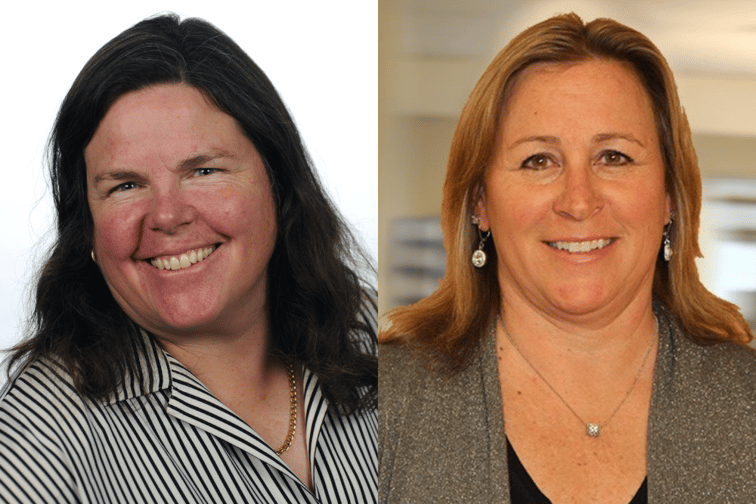

This article was produced in partnership with Business Risk Partners.
Gia Snape, of Insurance Business, sat down with Lisa Doherty, president, and Karen Lombardo, managing director, of Business Risk Partners, to talk about professional liability exposures that insurance agents face amid increasing sophistication in the industry.
Insurance agents are increasingly exposed to professional liability risks amid a progressively sophisticated insurance market, despite being among the most knowledgeable people in the space.
At least one MGA has flagged a rise in E&O claims from lawsuits related to underinsurance and new exposures.
“The world of insurance has gotten so complicated, and you can get insurance for just about anything,” said Lisa Doherty (pictured on the left), president of Business Risk Partners, a specialty insurance underwriter and program administrator.
“It’s unrealistic to think that a six-person agency is going to be able to understand all the nuances of all those products and get it right.”
Business Risk Partners, which specializes in underwriting insurance agents errors & omissions (E&O) coverage, estimates that around one in four insurance agencies get sued for mistakes every year.
“The change in exposure and the complexities around the coverages are among the biggest exposures for the smaller retail agents,” Doherty said.
Inflation and the hard market in property and personal lines may be partly behind the growing trend, according to Business Risk Partners.
Many clients may find that their policy, for instance, only covers the cost of replacing or repairing their property several years ago, getting a nasty shock when they file a claim today.
“They may have been insured for your barn at 2015 prices, but that’s only going to build back 65% of the building, when they’re expecting 100% to be covered,” said Doherty.
“But how many agents are calling their customers to say, ‘hey, you should bump up [your coverage] by 20%.’ I suspect they’re in the minority, and that’s going to be a real exposure if the client has a tragic issue with their property.”
It’s therefore critical for agents to check in with their clients regularly to ensure their coverage limits are up to date and their assets are insured to value.
Doherty also noted the rise of nuclear verdicts – jury awards or settlements that are exceedingly high, or greater than $10 million – as another cost pressure for insurers, contributing to rising premiums for clients.
“Let’s say that that medical facility only had a 10 or $15 million limit, but they get hit with a $27 million verdict for medical malpractice, they’re going to be talking to their agent,” said Doherty.
Insurance agencies are also taking heat amid carrier withdrawals and restrictions in states such as California, New York, and Florida.
Large players such as State Farm, Allstate, and Liberty Mutual have announced withdrawals from major markets, pullback on certain lines of business, or non-renewals as they wrangle with ballooning catastrophe losses.
The disruption has left agents scrambling to find new sources of capacity for their clients, Doherty noted.
“Agencies have to replace the coverage, but will it be the same or equivalent to what their clients had before?” she asked.
“I think a lot of people are going to end up in the non-admitted markets where the coverage probably isn’t quite as broad. Then when the claim happens in the next wildfire, is the agent going to have an issue?”
Claims stemming from catastrophes are also often followed by a wave of E&O claims, a phenomenon Doherty calls a “double trigger” for losses. The MGA leaders confirmed a significant number of E&O claims on the back of the 2020 Glass Fire in California and Superstorm Sandy, for instance.
“We’ve always been careful in Florida and California because they have more losses, and more losses leads to more E&O losses,” she said. “You can’t have an agency loss until there’s an underlying claim. So, when you have a wildfire or another massive event, there’s going to be E&O claims arising from it.”
Karen Lombardo (pictured on the right), managing director at Business Risk Partners, highlighted the importance of observing agency best practices and continued education as key strategies for mitigating E&O risks.
“We want to make sure that everybody in the agency is following the same standards,” she said. “They should also provide some good risk management and make sure everybody is staying current with the market trends.”
Lombardo and Doherty also warned agents against leaning too hard on “special relationships,” and instead focus on strong communication with clients.
“There’s this trend where if there’s a special relationship established between the agent and the insured, the liability for the agent climbs dramatically,” said Doherty. “The agent becomes the expert that they rely on.”
“We see quite often that an insured doesn’t think they have to tell the agent about new property additions, or that since the agent has been on the property and they have that special relationship with them, they figure that the agent would just apply more limits to them, and that’s not the case,” Lombardo shared.
“At the end of the day, you have to take the time to understand your client and apply that knowledge to your insurance practice,” Doherty agreed.
